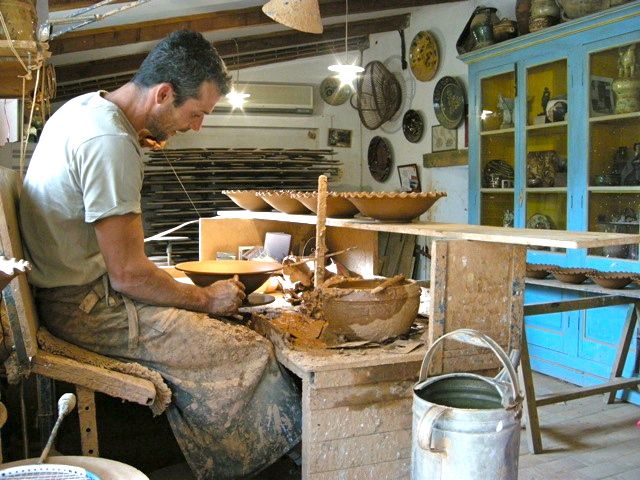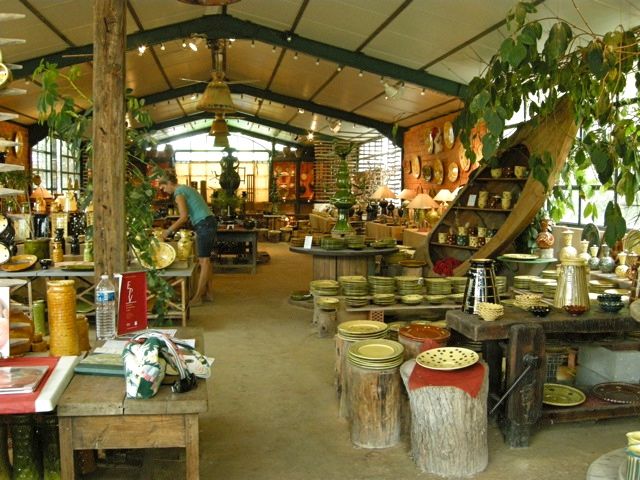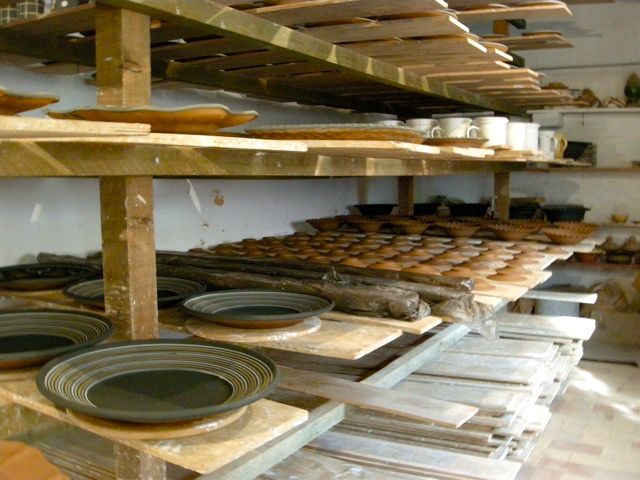 Unsurprisingly, I get questions from people looking to buy ceramics online quite frequently. The most requested information about ceramics & pottery deals with ginger jars. Thinking about incorporating these decorating statements into your home? Here are my tips to choose and buy these ceramics online with success.
Unsurprisingly, I get questions from people looking to buy ceramics online quite frequently. The most requested information about ceramics & pottery deals with ginger jars. Thinking about incorporating these decorating statements into your home? Here are my tips to choose and buy these ceramics online with success.
 • Make a decorating plan. There’s nothing worse than buying ceramics only to discover you don’t have a spot to display them. Before you start looking at ceramics online, have a clear idea of where they’ll go in your home. For example, you might want a pair of ginger jars for the mantle, a bedroom, or to grace a sideboard. When picking spots for your future ceramics also consider how people walk in your home and stability issues. Medium-sized ginger jars next to the fireplace might look great, but for anyone with pets or small children, they’re more likely to get knocked over.
• Make a decorating plan. There’s nothing worse than buying ceramics only to discover you don’t have a spot to display them. Before you start looking at ceramics online, have a clear idea of where they’ll go in your home. For example, you might want a pair of ginger jars for the mantle, a bedroom, or to grace a sideboard. When picking spots for your future ceramics also consider how people walk in your home and stability issues. Medium-sized ginger jars next to the fireplace might look great, but for anyone with pets or small children, they’re more likely to get knocked over.
• Measure. Measure. Measure. Once you have spots in mind for your future ginger jars, measure the space. This way you’ll have some starting parameters for choosing the ceramics you want to buy. When you find something you like online, check out the size to ensure it will look great in your home. A ginger jar that’s too small or too big always looks a bit out of place, so consider all dimensions.
• Think about style. Color and style are certainly other important components when you buy ceramics online. Do you need something solid to accent a room? Or will your ginger jars add texture and pattern to the space? Do you want ginger jars with an Asian or Mexican flair? Smaller delicate jars are perfect for high spaces (where they won’t get damaged) while larger ginger jars are an excellent decorating anchor for a living room or even patio.
• Go beyond simple pairing. A single large ginger jar quickly turns a side table into a stylish accent or enlivens a shelf. Matched pairs of ginger jars are classic for formal-feeling arrangements (like fireplaces, sideboards, or flanking a bed). Grouping various sized jars together adds interest to a table without looking staid, like in the image below. Think creatively; you’ll be surprised at the results.
• Check out shipping before you buy. When you buy ceramics online, make sure to look at the shipping and return policies for the website. Knowing the breakage policy and shipping costs before placing your order can save you heartbreak in the future. Just trust me on this one.
Have you bought ceramics & pottery or ginger jars online? Have any advice or suggestions? Leave a comment and let us know!
Ginger jar and orchid image courtesy of Made By Girl.
Living room image courtesy of Jennifer Brouwer (Jennifer Brouwer Design).



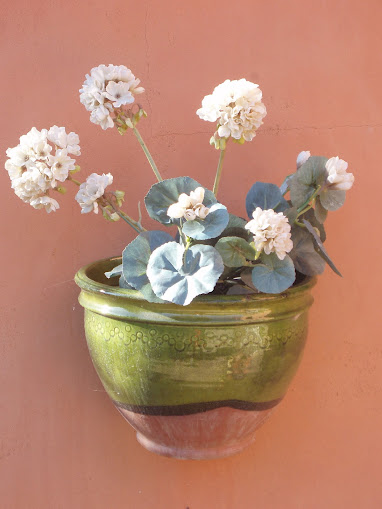


















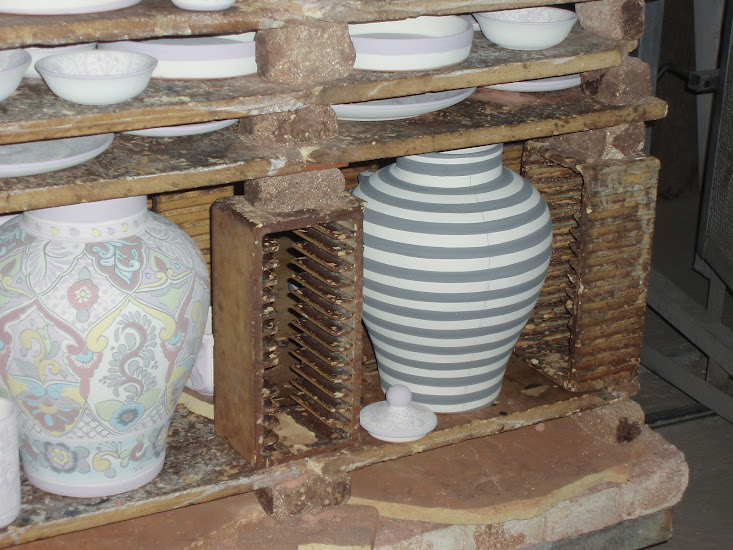


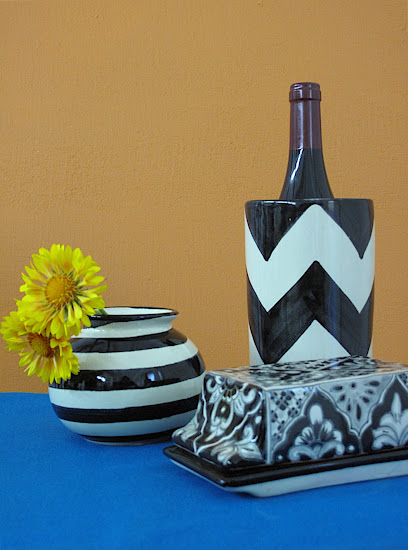


















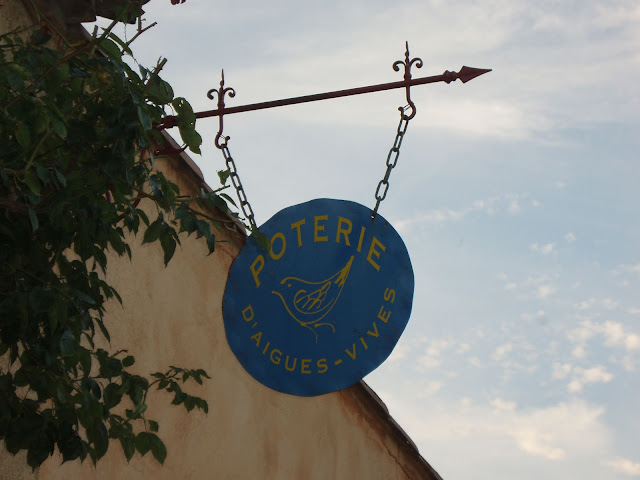
 The two old women owners at Foucard-Jourdan used their canes to crush ceramic pieces on the potters’ wheel that showed any sign of imperfection. Perhaps that’s where Richard learned his attention to detail and developed his appreciation for the slightly imperfect. I love the friendliness of his Aigues-Vives studio, with a tight team consisting of his two employees Arnaud and Katia, his wife Sylvie, and himself. The Esteban family also has three young children with whom I’ve shared several meals over the years, communicating in a mix of broken French and English.
The two old women owners at Foucard-Jourdan used their canes to crush ceramic pieces on the potters’ wheel that showed any sign of imperfection. Perhaps that’s where Richard learned his attention to detail and developed his appreciation for the slightly imperfect. I love the friendliness of his Aigues-Vives studio, with a tight team consisting of his two employees Arnaud and Katia, his wife Sylvie, and himself. The Esteban family also has three young children with whom I’ve shared several meals over the years, communicating in a mix of broken French and English.